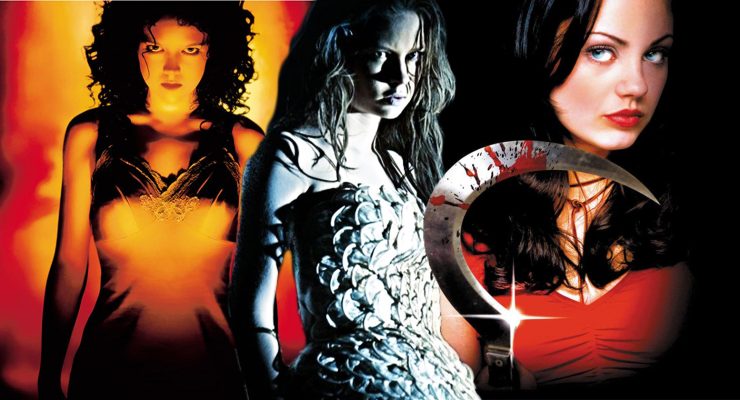Commenting on the critics with Simon Columb…
Angie Han writes for Slash Film about a new (Beatles-inspired?) double-film project that Joel Edgerton and Jessica Chastain have recently become involved in called The Disappearance of Eleanor Rigby: His and The Disappearance of Eleanor Rigby: Hers:
“I’m a sucker for movies about failing relationships to begin with, and I love the idea of two films telling the same tale from two different angles. The same exact events can seem radically different depending on who’s telling the story, especially if the people involved aren’t quite on the same wavelength at the moment. On the downside, if the project is badly done, audiences could wind up paying twice for what’s essentially the same film, but the press release notes that both parts are intended as stand-alone features.“
When press interviewed Lynne Ramsay for We Need to Talk About Kevin she hinted at the fantasy idea of creating a trilogy – the first film dealing with the Mum’s perspective, second from the Father’s and the final from the perspective of Kevin himself. I remember reading this and thinking, as an idea, that would be brilliant. But could it ever work?
Sequels, as we know, are the guaranteed sell for studios. If they can get Will Smith and Tommy Lee Jones back together for Men in Black III, it doesn’t matter if the story isn’t very good – the opening weekend alone should justify the cost. Better yet, shooting two films at the same time and releasing them separately is a much cheaper way to ensure that a sequel is already set-up and yet only pay for the one extended production. Back-to-back productions include Back to the Future Part II and Part III and The Matrix Reloaded and The Matrix Revolutions.
Recently, studios are much happier to gain double the box office by simply splitting a film in two – Harry Potter and the Deathly Hallows: Part 1 and Part 2, The Twilight Saga: Breaking Dawn – Part 1 and Part 2, Kill Bill: Vol. 1 and Vol. 2, Che: Part One and Part Two and the upcoming The Hobbit: An Unexpected Journey and The Hobbit: There and Back Again; even Grindhouse, when it didn’t garner a big-enough box office in the US, Miramax split up the two films – Planet Terror and Death Proof – and released them separately across the rest of the world. It didn’t matter that artistically the films were always intended to be together with characters and actors that appeared in both films.
On the one hand, like Han, we could all agree that the ‘idea’ justifies the production of the ‘double film’. But in this case, I am going to be a little bit more cynical. From the outset, this is a very purposeful project that doesn’t cost much but should make a substantial amount of money. Much more a manufactured product akin to a special edition of a chocolate bar rather than a work of art. There are many films that effectively explore the different perspectives of characters without having to dedicate an entire film to each perspective – Rashomon would’ve become quite tiresome if it was three separate films. Not to mention how it can also be much more interesting to leave certain aspects quite ambiguous – we don’t need to know every perspective. Chances are that both films will total roughly 3 hours so they could theoretically be released together as one double-bill feature. But of course, that would not make as much money, would it? The whole point of this is not to push the boundaries of cinema or create personal and meaningful art – it is to make two films for the price of one.
Bottom line is it doesn’t matter because it is the idea that sells. (Additionally, funny how they chose the name ‘Eleanor Rigby’… that guarantees the obsessive Beatles fan audience too! Kerr-ching!)










